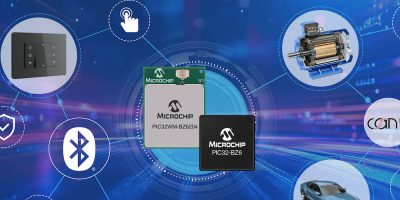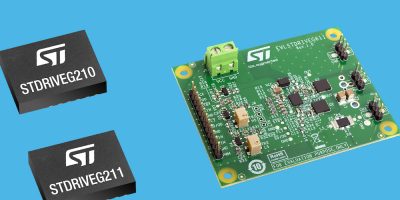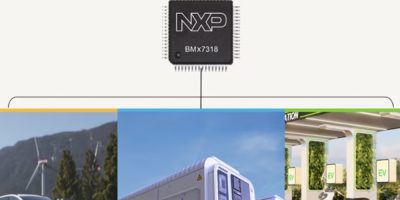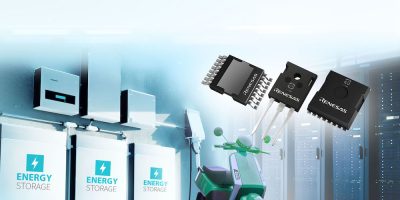Microchip has released the highly integrated PIC32-BZ6 MCU that serves as a common, single-chip platform to reduce development cost, complexity and time-to-market for multi-protocol products featuring advanced connectivity and scalability.
RF design for smart devices has become increasingly complex, and wireless solutions typically require multiple chips to add new features or frequent redesigns to support evolving industry standards. The PIC32-BZ6 MCU replaces these multi-chip solutions and reduces the redesign burden with a single, highly integrated chip that removes the complexity of multi-protocol wired and wireless connectivity. The MCU also includes analog peripherals to simplify motor control development, along with touch and graphics capabilities for advanced user interfaces and enhanced memory to support complex applications, heavy workloads and Over the Air (OTA) firmware updates.
The PIC32-BZ6 MCU platform streamlines development of products in the smart home and for automotive connectivity, industrial automation and wireless motor control use cases. Key features include:
• High memory and scalable package choices to support demanding applications and OTA updates: The high-performance MCU includes 2 MB Flash memory and 512 KB RAM and is available in 132-pin ICs and modules with additional pin and package variants planned.
• Multi-protocol wireless networking: Qualified against Bluetooth Core Specification 6.0, the device also supports 802.15.4-based protocols such as Thread and Matter plus proprietary smart-home mesh networking protocols.
• Design flexibility that extends product options and scaling opportunities: Versatile and comprehensive selection of on-chip peripherals goes beyond wireless connectivity and OTA updates to support:
o Wired connectivity: Multiple interfaces include two CAN-FD ports for automotive and industrial communication, a 10/100 Mbps Ethernet MAC for high-speed wired connectivity and a USB 2.0 full-speed transceiver for seamless data transfer and PC integration.
o Touch and graphics: Incorporates peripherals that enable advanced user interfaces including Capacitive Voltage Divider (CVD)-based touch capabilities with up to 18 channels.
o Motor control: Simplifies system development through advanced analog peripherals such as 12-bit ADCs, 7-bit DAC, analog comparators, PWMs and QEI for precise motor position and speed control.
• Security by design to protect applications and IP: Includes immutable secure boot in ROM and an advanced on-board hardware-based security engine supporting AES, SHA, ECC and TRNG encryption.
• Reliability in harsh environments: The device is qualified to AEC-Q100 Grade 1 (125 °C) specifications for automotive and industrial environments.
Development Tools
Microchip simplifies development and product certification for the PIC32-BZ6 MCU by offering proven chip-down reference designs and wireless design check services, helping to minimise design risk. To further ease regulatory compliance, pre-certified modules are available in multiple regions worldwide. The PIC32-BZ6 MCU family is supported by the PIC32-BZ6 Curiosity Board that enables testing of all MCU I/Os, connectivity and peripheral features. Developers also benefit from a comprehensive development environment through Microchip’s MPLAB® Integrated Development Environment (IDE) and the Zephyr® Real Time Operating System (RTOS).







